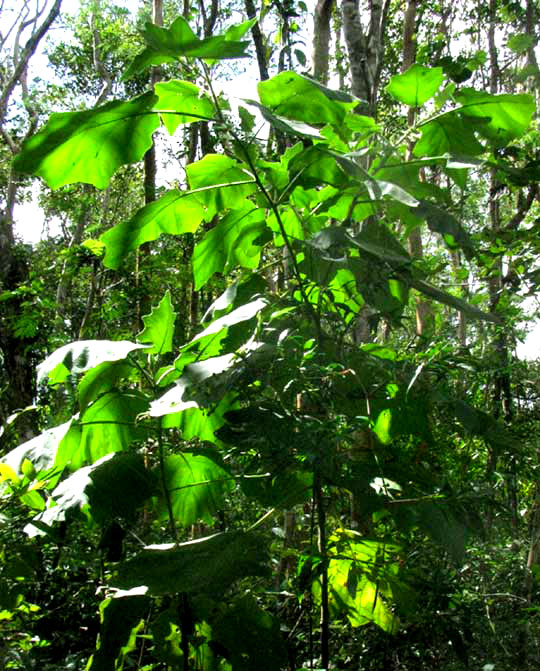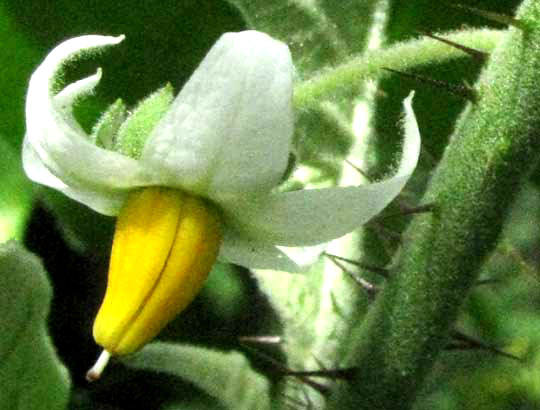Excerpts from Jim Conrad's
Naturalist Newsletter
from the February 26, 2012 Newsletter issued from Hacienda Chichen Resort beside Chichén Itzá Ruins; limestone bedrock; elevation ~39m (~128ft), N20.675°, W88.569°; central Yucatán state, MÉXICO
MAYA TEMPLE NIGHTSHADE
The Hacienda's property extends far into the surrounding forest, where hundreds of ancient Maya ruins lie moldering. Typically all you see of a ruin is a rise on the forest floor overgrown with vegetation. Only rarely do stone surfaces bearing hieroglyphics peek from among the rubble and plant cover. It was atop such a rectangular mound, which earlier surely bore a building, that a six-ft-high (1.8m) semi-shrub turned up, its big, bluntly lobed, spine-bearing leaves translucing in sunlight, as shown below:

Some plant species seem to cluster around ancient ruins, so might this possibly be a relict species somehow hanging on from ancient Maya times? Also, I'd not seen this species elsewhere, so I clambered onto the mound for a closer look. Though the plant was a species I hadn't seen, it bore a few flowers structured a familiar way. See if you recognize the plant group it belongs to by looking at a flower below:

With its spreading, five-lobed corolla subtending five yellow anthers grown together by their margins to form a cylinder around the female pistil, it could hardly be anything other than a member of the Nightshade Family, the Solanaceae, as well as the nightshade genus, Solanum. But Solanum is one of the largest of the Earth's flowering-plant genera, holding about 1700 species, so we were still far from knowing exactly what we had.
To help with later identification I noted the plant's special features, such the dark, broad-based spines along its leaves' main veins, and how the leaves themselves were soft-fuzzy with white hairs, as shown below:

The species turned out to be SOLANUM HIRTUM, native from Mexico south into northern South America. It's a forest species that can be weedy enough to bear a Spanish name, which is Cojón de Gato, or Cat's Balls, referring to its spherical, fuzzy fruits.
The Maya also have a name for it, Put Balam, or "Jaguar Papaya." In Mayan cosmology the Jaguar is the most powerful shamanic animal, so the possibility arises that our temple-mound-growing nightshade may indeed once have been associated with Mayan rituals. It's recorded that chewing the plant's fresh leaves produces a narcotic and stimulating effect, and the fruits are used medicinally for treating angina.